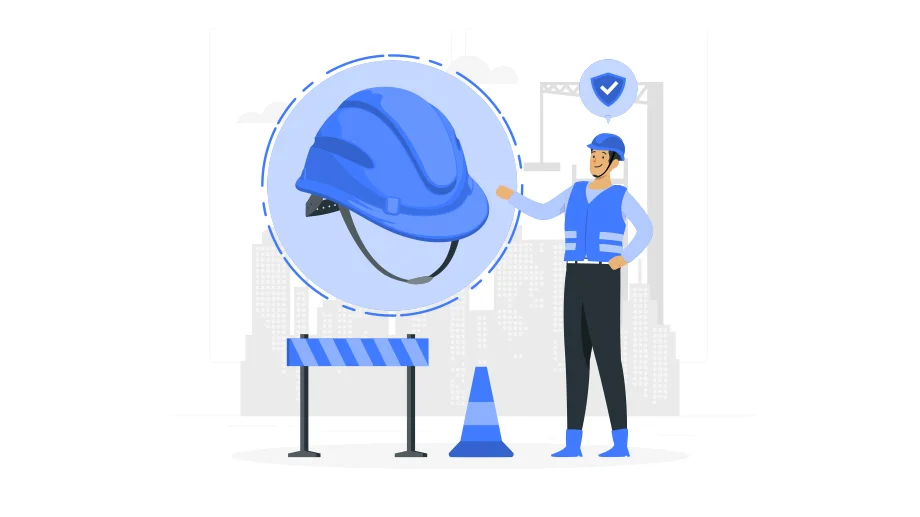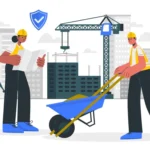As our world continues to evolve, the nature of work is also undergoing a profound transformation. Amidst these changes, the safety and well-being of lone workers have emerged as crucial considerations for organizations across industries. The concept of adopting a lone worker safety app goes beyond mere compliance with regulations; it is a matter of ethical responsibility and a testament to an organization’s commitment to its employees.
When we think about lone workers, we envision individuals who work in isolated or remote environments, away from the immediate supervision and support of their colleagues. From construction sites and healthcare facilities to transportation and maintenance sectors, lone workers are an integral part of many industries. Their job responsibilities often expose them to unique risks, including accidents, medical emergencies, and acts of violence. Consequently, organizations must acknowledge and address these risks associated with jobs where you work alone, and make the necessary arrangements for safety.
Ensuring lone worker protection is not only a moral imperative but also an essential aspect of compliance such as OSHA lone worker regulations. Government regulations and occupational health and safety standards have been established to safeguard the welfare of employees, including those who work alone. Organizations that fail to meet these requirements may face legal ramifications, reputational damage, and, most importantly, compromised employee safety. By proactively implementing measures to protect lone workers, organizations demonstrate their commitment to upholding their duty of care and fostering a culture of safety.
Relying on manual processes for lone worker safety is inadequate and ineffective. Manual check-ins and paper-based systems are prone to errors, delays, and miscommunication, leaving lone workers vulnerable. These methods lack real-time visibility, responsiveness, and accurate record-keeping, making it essential to embrace a lone worker safety app for more efficient and reliable safety solutions.
With technology continuing to advance at an astonishing pace, the safety and well-being of lone workers have emerged as critical concerns. With the widespread adoption of mobile technologies, such as smartphones and wearable devices, a wealth of opportunities has opened up to address these concerns.
In this blog, we’ll explore how a lone worker safety app can be utilized to improve worker safety and the benefits they bring to both employees and employers.
Importance of Prioritizing Worker Safety With a Lone Worker Safety App
The importance of prioritizing lone worker safety cannot be overstated. When employees work alone, without direct supervision or immediate access to assistance, they face unique risks and vulnerabilities. Prioritizing lone worker safety is crucial for several reasons:
- Employee Well-being: The safety and well-being of employees should always be a top priority for organizations. By prioritizing lone worker safety, employers demonstrate their commitment to providing a secure work environment, fostering employee trust, and promoting a positive work culture.
- Legal and Regulatory Compliance: Many jurisdictions have specific regulations and standards in place to protect lone workers. Failing to prioritize their safety can result in legal consequences and potential liability for employers. By complying with relevant laws and OSHA lone worker regulations, organizations mitigate risks and protect themselves from legal and financial repercussions.
- Risk Mitigation: Working alone can expose employees to a wide range of risks, such as accidents, injuries, health emergencies, violence, or harassment. Prioritizing lone worker protection allows organizations to identify and assess these risks, implement appropriate preventive measures, and develop emergency response protocols. This helps minimize potential hazards and ensures that lone workers are adequately protected.
- Productivity and Efficiency: When employees feel safe and supported, they can focus on their tasks with greater confidence and peace of mind. Prioritizing lone worker safety improves morale, reduces stress, and enhances productivity and efficiency. Employees are more likely to perform at their best when they know their well-being is valued and protected.
- Reputation and Stakeholder Confidence: Organizations that prioritize lone worker safety enhance their reputation and stakeholder confidence. Customers, clients, investors, and the general public expect businesses to operate responsibly and ethically. Demonstrating a commitment to the safety and welfare of lone workers helps build trust, maintain positive relationships, and attract and retain top talent.
- Emergency Preparedness: Accidents or emergencies can happen at any time, and lone workers may be at a disadvantage due to limited access to immediate assistance. Prioritizing lone worker protection involves developing comprehensive emergency response plans, ensuring effective communication channels, and providing necessary training and resources. This enables swift action in emergencies, minimizing potential harm or damage.
By investing in a lone worker safety app, organizations demonstrate their commitment to creating a secure and supportive work environment for all employees.
Role of Lone Worker Safety App
One of the most impactful ways in which advancing mobile technologies are supporting lone worker safety is through real-time location tracking and monitoring. GPS-enabled smartphones and wearable devices equipped with geolocation capabilities provide organizations with unprecedented visibility into the whereabouts of their lone workers. All these features are incorporated in modern day lone worker safety app.
By leveraging these technologies, employers can monitor their employees’ movements, identify potential risks, and promptly respond to emergencies. In situations where a lone worker fails to check-in or encounters a hazardous situation, their precise location can be quickly determined, enabling swift and targeted assistance. This level of real-time tracking not only enhances the safety of lone workers but also instils a sense of security, knowing that help is just a touch away.
Real-Time Communication: Mobile technologies enable lone workers to stay connected with their supervisors, colleagues, or emergency response teams in real-time. Features like voice calls, messaging apps, and video conferencing provide instant communication channels for immediate assistance, guidance, or reporting emergencies.
GPS Tracking and Geolocation: GPS capabilities in mobile devices allow employers to track the precise location of lone workers. This information is crucial for monitoring their safety, especially in remote or hazardous environments. In case of an emergency, responders can quickly locate the worker and provide necessary aid.
Mobile Applications for Lone Worker Safety: Lone worker protection smartphone applications are designed to address the unique safety needs of lone workers. These apps often include features like panic buttons, timed check-ins, and automatic alerts triggered by lack of movement or non-response. Such applications ensure that lone workers are continuously monitored and that appropriate actions are taken in case of an incident.
Wearable Technology and Personal Safety Devices: Advancements in wearable technology offer additional safety measures for lone workers. Smart personal protective equipment, such as smart helmets or vests, can detect falls, excessive heat, or toxic substances and send alerts to supervisors or emergency services. These devices provide an extra layer of protection and improve response time in critical situations.
Safety Auditing and Compliance: Mobile technologies can facilitate safety auditing and compliance checks for lone workers. Dedicated mobile apps or safety software can guide workers through safety protocols, check for compliance, and document safety procedures. This ensures that lone workers adhere to established safety guidelines and helps in identifying potential risks.
Training and Education: Mobile technologies provide a convenient platform for delivering safety training and educational materials to lone workers. Interactive mobile apps or e-learning modules can offer instructional videos, quizzes, and simulations, enhancing lone workers’ knowledge and awareness of safety protocols, hazard identification, and emergency response procedures.
Data Analysis and Incident Reporting: Mobile technologies enable the collection and analysis of data related to lone worker safety. Incident reporting apps allow workers to document and report hazards or near misses, contributing to a proactive safety culture. The data gathered can be analyzed to identify trends, improve safety protocols, and implement preventive measures.
Integration with Central Monitoring Systems: Mobile technologies can be seamlessly integrated with central monitoring systems, enabling efficient tracking and managing of lone workers. This integration ensures that supervisors or security personnel have a comprehensive overview of lone worker activities, locations, and safety statuses.
Advancing mobile technologies have emerged as a beacon of hope for enhancing lone worker safety in various industries. With the rapid evolution of smartphones, wearables, and applications, organizations now have powerful tools at their disposal to protect and support their lone workers.
The benefits of leveraging a lone worker safety app are manifold. Real-time communication and tracking features enable continuous monitoring and immediate response in case of emergencies or hazardous situations. GPS capabilities provide precise location information, allowing employers to quickly locate and assist lone workers in distress.
Conclusion
By integrating a lone worker safety app, organizations demonstrate a commitment to employee well-being while also fulfilling legal and OSHA lone worker regulatory obligations. They foster a culture of safety, instilling confidence and trust in their lone workers.
However, it is essential to recognize that technology alone cannot guarantee lone worker safety. Organizations must accompany these advancements with comprehensive training, regular risk assessments, and clear protocols for emergency response. Combining robust mobile technologies with proactive safety measures creates a robust safety framework that empowers lone workers and mitigates potential risks effectively.
In conclusion, lone worker protection smartphone apps have revolutionized the way organizations support lone worker safety. By harnessing the power of smartphones, wearables, and specialized applications, businesses can proactively protect their lone workers, enabling them to carry out their responsibilities with confidence and peace of mind. The future holds even more promising advancements, and it is crucial for organizations to stay at the forefront of mobile technology to ensure the safety and well-being of their lone workers.


